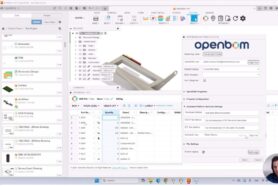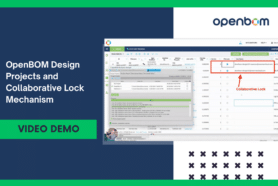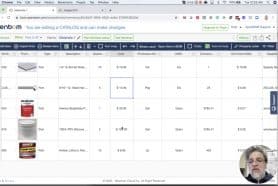As the demands of the modern-day consumer grow, so do the complexities of the products made by these manufacturers. Manufacturers are now supposed to develop more complex products and bring them to life quicker than ever. This creates a gap between what the manufacturer is able to make as a prototype and what they can make in mass production.
The best tool to minimize the gap between development and prototypes to mass production is called design for manufacturing (DFM). Today’s post is going to outline what DFM is and how your contract manufacturer (CM) or supplier can support this.
What is DFM (Design For Manufacturing)?
According to Quality-One, DFM and DFMA “enables a product design to be efficiently manufactured and easily assembled with minimum labor cost. Through the use of DFM/A, a company can prevent, detect, quantify and eliminate waste and manufacturing inefficiency within a product design.”
In the early stages of a product lifecycle, DFM is not important. The goal of early-stage development is to verify the concept works. No one cares about manufacturing. As you proceed and build the demand for your product, you start to transition into the production frame of mind.
As you begin this transition from development to production you will start to think of how your part can be optimized for production. There are a few parts of DFM and design for manufacturing and assembly (DFMA).
Part Optimization for Mass Production
While making prototypes, the fabrication steps are different than those that will be used in production. This leaves the engineer forced to design parts for prototypes. However, since the fabrication processes are not scaleable for production, these parts need to be re-engineered for production.
When optimizing parts for production, these common questions are asked:
- Can you combine some parts?
- Does the part design change when the fabrication process changes?
- Are there existing alternatives?
Tool and Die Design
One of the leading aspects of DFM is reviewing the tool design. For a plastic part, you have to look at multiple parts of the design. Such as draft, sink, gates, ridges, ejectors, and more. If these exist then they can jeopardize the quality of the part as well as the appearance.
Usually, when a part is originally designed, it’s designed for prototypes. DFM at the tooling stage will transition the prototype part to a part that can be made with a mass production tool at scale.
Quality
Quality does not come out of nowhere. The quality of the product is engrained in the product before mass production. In other words, if your design is poor, you will have quality problems. Therefore, if the design is not optimized for production, the product will have a number of quality problems which lead to extended lead times, pricing problems, and customer complaints.
DFM and DFMA are performed to minimize the risks of defects throughout the manufacturing process by making modifications to the design.
Price
Prices are not necessarily fixed depending on whether the parts and design you have are flexible. DFM will look at reducing the price by changing the design, proposing alternative components, and changing some fabrication processes. This was common during the chip shortage.
Also, optimizing your part for production and making the proper improvement for tooling will reduce the price of your product.
Can your Contract Manufacturing (CM) Help?
DFM is quite important and will be one of the main parts that allow for a smooth transition into production. But can they support you with this?
While you are evaluating CMs you should see if they have provided DFM support to companies that have a product similar to yours in complexity. To get an idea of whether or not your CM can support you in DFM you should ask some questions. Here are some basic ones.
Questions for Parts:
- Is it more cost-effective to use alternative parts, materials, or processes? Such as going from laser cutting to stamping or from CNC machining to die cast.
- What is the machine size (tonnage) needed in order to make this part effective?
- What are the tolerances for the part vs the acceptable tolerance from the specified manufacturing method?
- What are the most expensive parts and how can we cost them down?
Questions for Assembly:
- How can the parts be assembled?
- What jigs are needed?
- What are design changes that can make it easier to assemble?
Questions for off-the Shelf Components:
- Are these parts readily available?
- Is there a cost-effective option?
- What alternatives are available?
Questions for Tooling:
- What changes are possible to decrease the cost/investment?
- Will there be any textures on the tool?
- What is the finest tolerance achievable for the tool?
Why Should your CM Support you in DFM?
The answer is quite straightforward. The company you contract to make your product should understand its production and assembly processes best. If they understand this then they can support you with DFM.
Your CM will also have its own network of suppliers who can provide support. For example, if your CM does not have plastic injection molding machines then your CM will consult with their plastics supplier on DFM.
During the DFM process, it will be important to set up certain processes and workflows. Failing to do will allow the CM to create any changes they want to the product, even if it’s to a key part that cannot change. You should set up certain workflows for change requests and change orders. Your CM should feel free to recommend any changes. However, you should be responsible for accepting all change requests.
The best way to set up these workflows is moving to the digital era.
What can you do today?
If you are looking to transition from prototypes to mass production then digital transformation should be very important for you. The digital transformation will help you to transform your processes to use digital technologies to keep all of your product data together, to manage your revisions and manage an ECR/ECO process. To have a centralized platform that connects your team with your contract manufacturer is extremely important to set up modern digital processes to save time and money.
OpenBOM is a cloud-based PDM & PLM platform to manage your engineering and manufacturing data. Companies from startups to Fortune 500’s use OpenBOM to create a centralized database to bring in, store and manage their manufacturing data. With this infrastructure, users also use OpenBOM to streamline both their change management and PO processes.
If you need to improve the way you manage your data and processes, share data instantly, or collaborate with contractors and suppliers. contact us today for a free consultation.
Regards,
Jared Haw
Join our newsletter to receive a weekly portion of news, articles, and tips about OpenBOM and our community.











